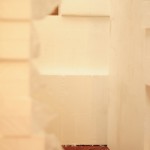What on earth is lumpy mail we hear you cry? And why should how humpy it is have anything to do with me?
Lumpy mail is often used to describe something of a shaped curiosity that travels by mail. Frequently used as a marketing ploy by organisations who send branded merchandise to prospects or as part of a customer loyalty scheme.
Eagerness to open the unknown
The one element that all lumpy mail is characterised by is its rather knobbly or uneven shape and hence the reference to it being humpy.
Lumpy mail poses a problem for the sender in terms of how best to package the novelty item so that it doesn’t get damaged. Their nature sets them aside from a standard piece of mail in an envelope or a brightly printed postcard. Inquisitiveness will get the better of anyone, despite what some may argue, so lumpy mail always gets opened. The last thing any receiver wants to experience is the unveiling of a squashed or smashed trinket. Deflated disappointment will be felt and potential resentment towards the sender.
Vertapak packaging to the rescue
Some lumpy mail products could take the form of a less than uniquely branded gift such as a stress ball, mug or phone accessory. These items will already have specific packaging and protection in the form of polystyrene sheets or beads.
But if you have something truly special and extra lumpy then you may require tailored packaging to ensure safe arrival to a zealous beneficiary.
Polystyrene is lightweight and versatile. Expanded polystyrene (EPS) can be moulded to exact requirements to snugly secure even the humpiest of lumpy mail.
Through scientific calculation
It’s not rocket science but the process is rather ingenious. Using scanned images or product drawings, 3D polystyrene shapes can be designed using precise dimensions to contour any object.
The result is a perfectly formed protective layer or impact-absorbing cushion that is both lightweight and robust.
So when you next consider a marketing campaign or new product development that has the characteristic of lumpy mail – complete with hump or nodule – get in touch and we’ll develop a tailored packaging material to ensure the safe passage of your item.
Contact us on 01384 457730 for more details.

